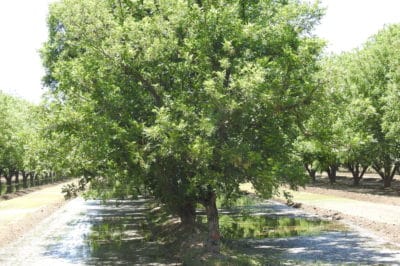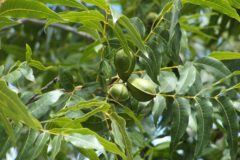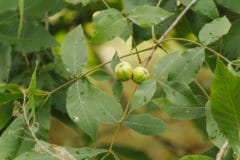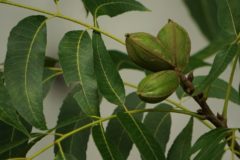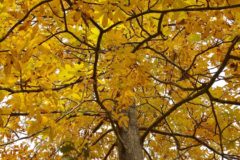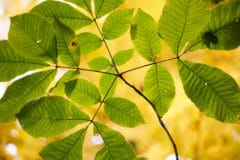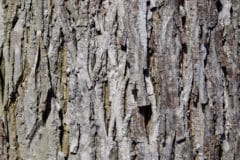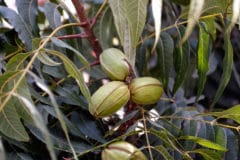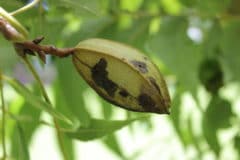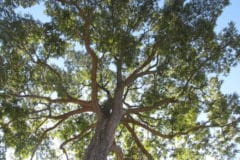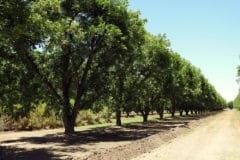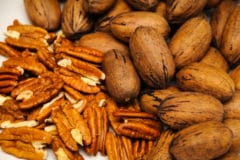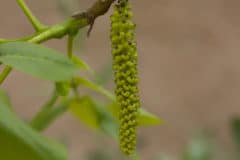Pecan Tree Size
As the largest trees in the hickory family, pecan trees regularly reach 70 to 100 feet tall with canopy spreads between 40 and 75 feet. Some have reached 150 feet. A stately tree with a tall, straight trunk and broad, symmetrically oval crown, the mature pecan needs more room than many backyards can provide. It’s best left to urban spaces, estate-sized lots and commercial orchards.
Pecan Tree Leaves
As you’d expect from a tree of its stature, the pecan also has some of the largest and most distinctive leaves in the hickory family:
- Pecan leaves measure from 1 foot to 20 inches long.
- Each leaf consists of nine to 17, 4-to 7-inch leaflets.
- The narrow leaflets curve like a falcon’s beak at their outer ends.
- All but one of the leaflets grow in opposite pairs along a central stem.
- The remaining leaflet forms the leaf’s tip.
- The lustrous leaflets are dark green on top and pale green underneath.
- New leaflets are covered with downy-soft hairs that they shed over time.
- The leaflets’ margins are toothed or doubly so.
Flowers, Fruit and Bark
Pecan trees are monoecious, meaning one tree produces both male and female flowers. Male flowers dangle from the branches in 5- to 6-inch clusters called catkins. Cup-shaped females open in terminal spikes beneath the catkins, where they trap pollen as it sheds.
Pecan fruits ripen in clusters of three to 11. Other hickory nuts open singly or in pairs. The fruits’ woody green husks split into four sections, revealing the light-brown nutshells inside. Rounded at their bases and pointed at their tips, the nuts usually measure 1 1/2 to 2 inches long.
Pecan trees have thick, narrowly fissured light- to reddish-brown bark. It gets flatter and scalier with age.
Expert gardener’s tip: Although a pecan tree’s fruit ripens in fall, how late in fall depends on where in USDA plant hardiness zones 6 through 9 it grows. Trees growing in UDSA zone 5, seldom produce nuts because summer isn’t warm enough.
Growth Rate
As far as growth rate goes, pecan trees are hares in a field of tortoises. They grow between 1 and 2 feet per year and begin producing nuts about 10 years after planting. Their closest competitors, shagbark hickories (Cary ovata), seldom stand taller than 18 feet after 20 years, and need another 20 to yield their first harvests.
